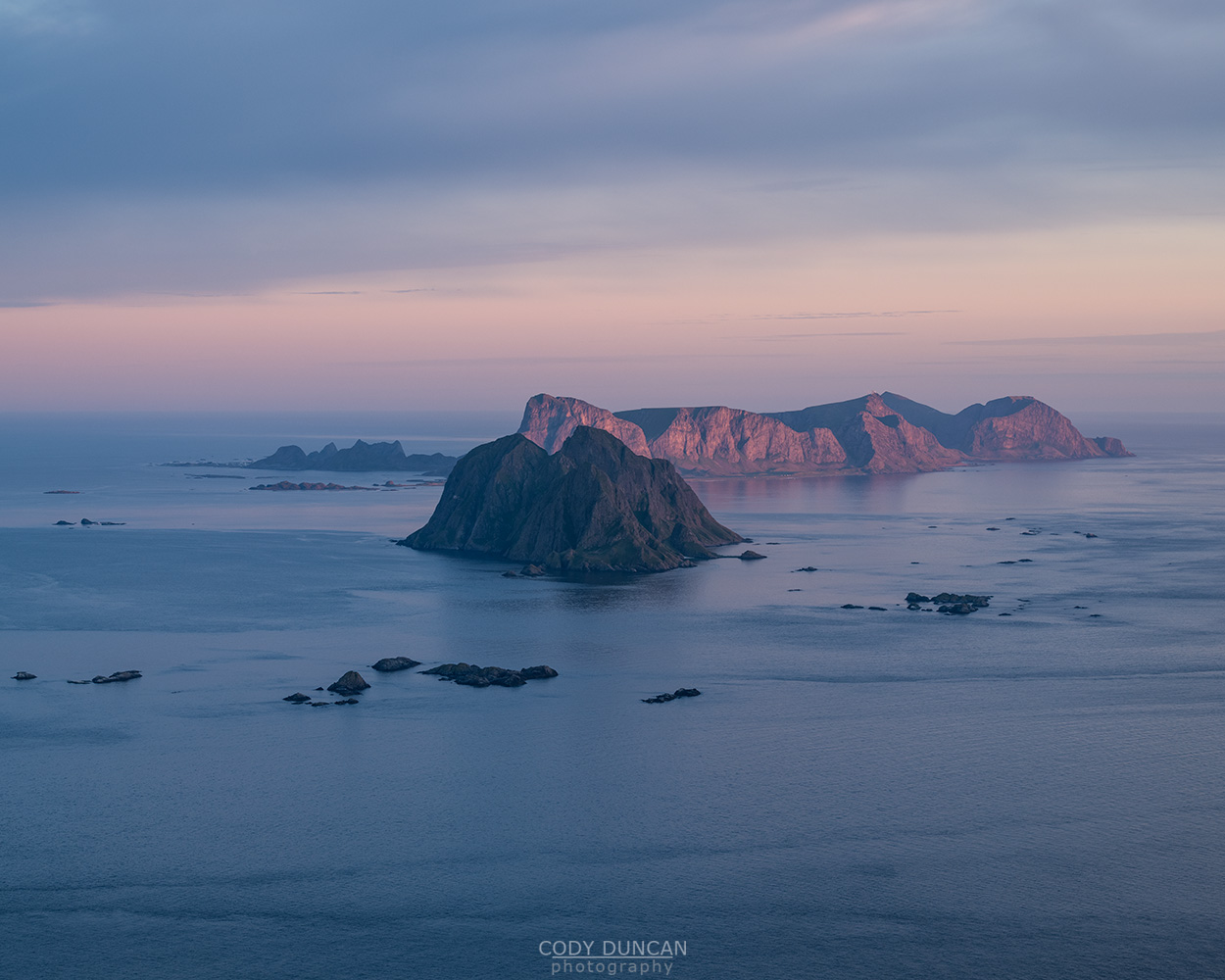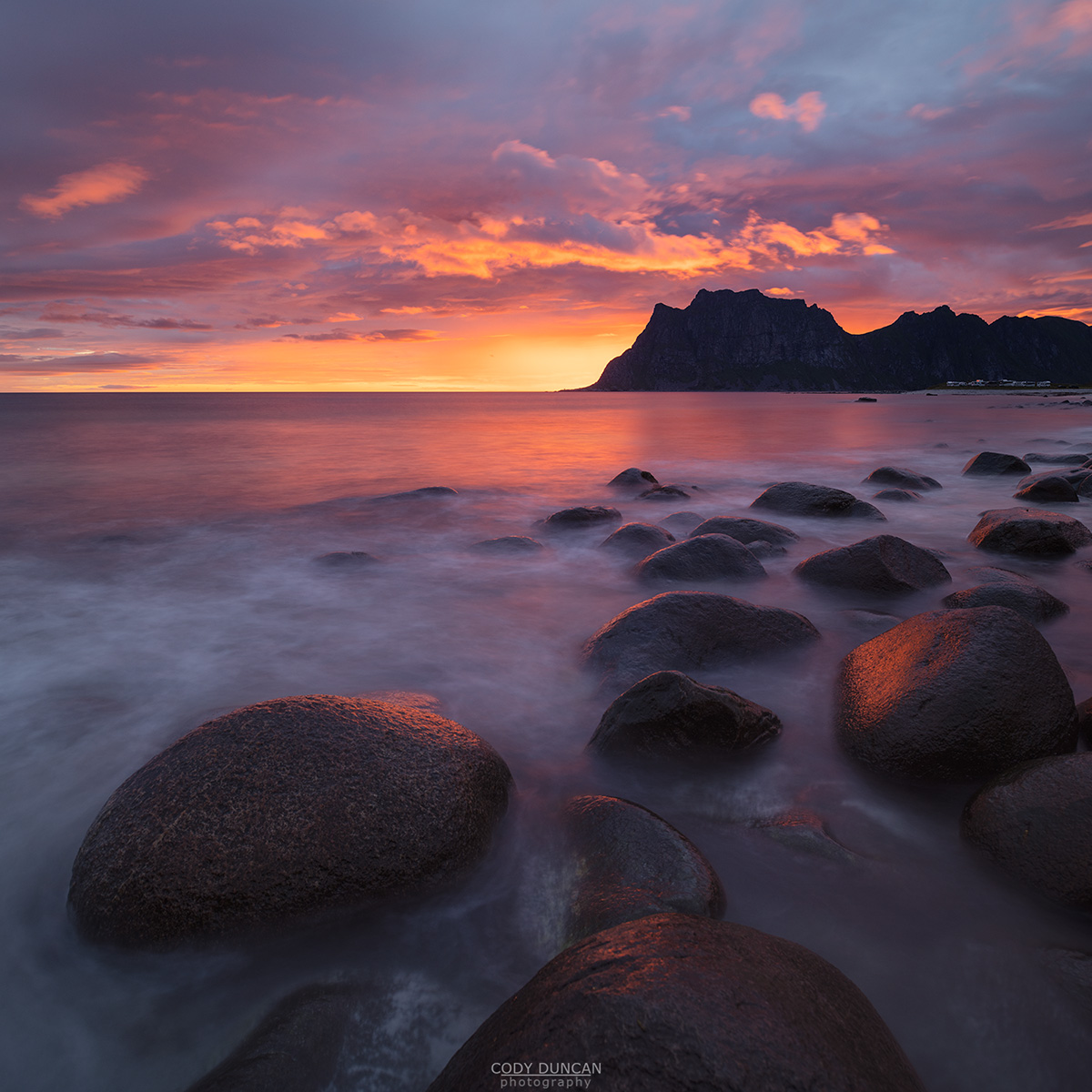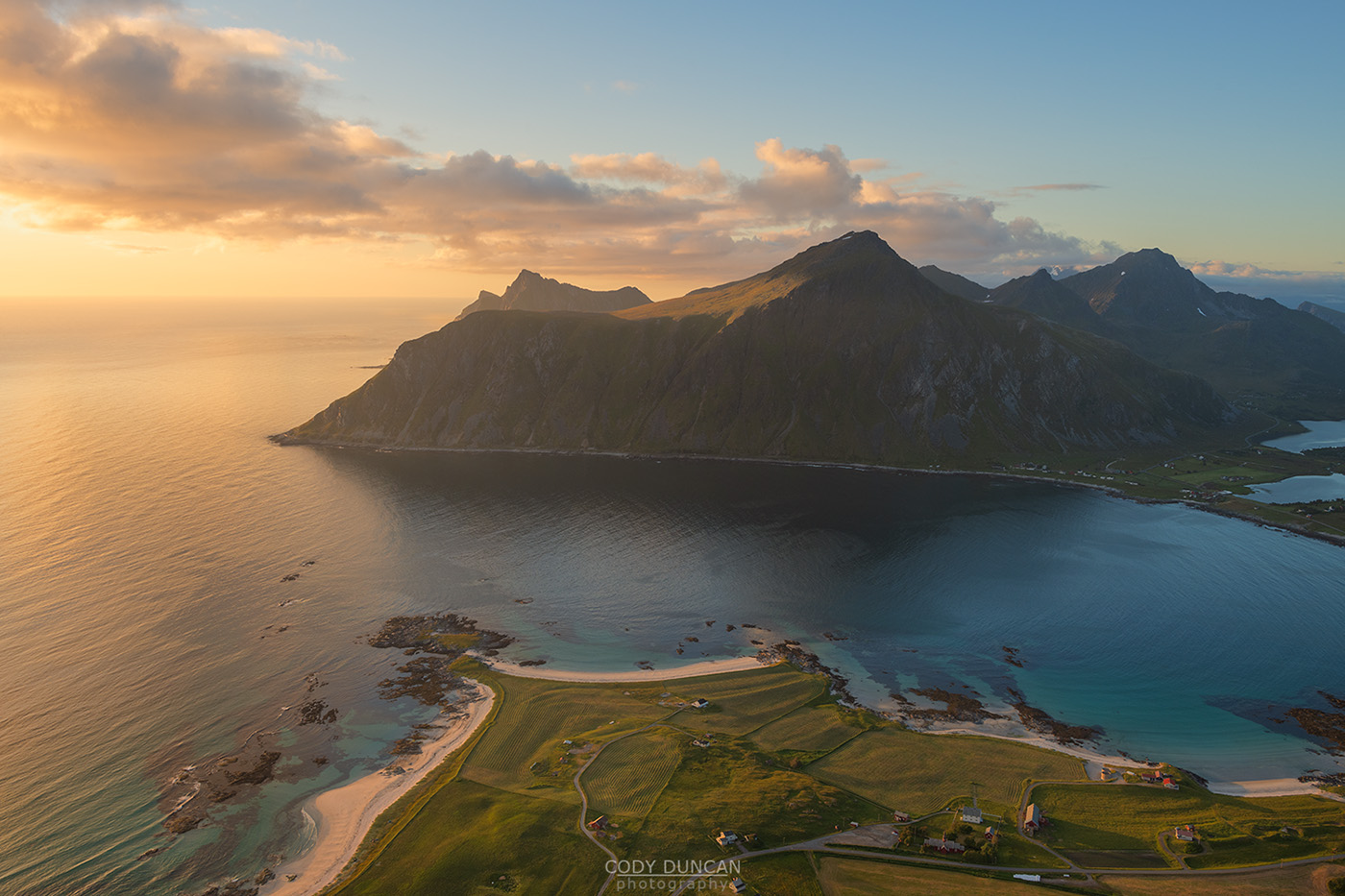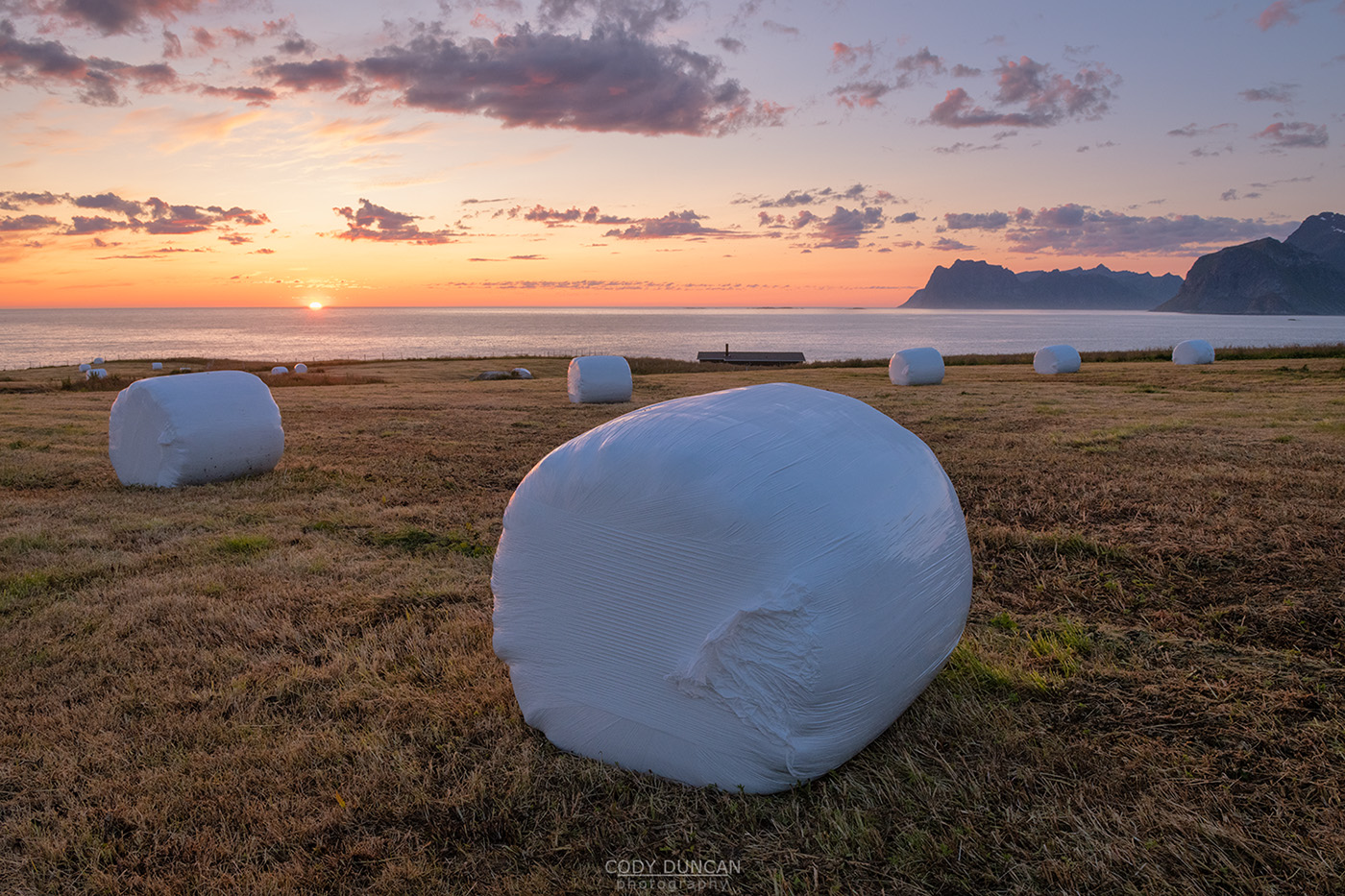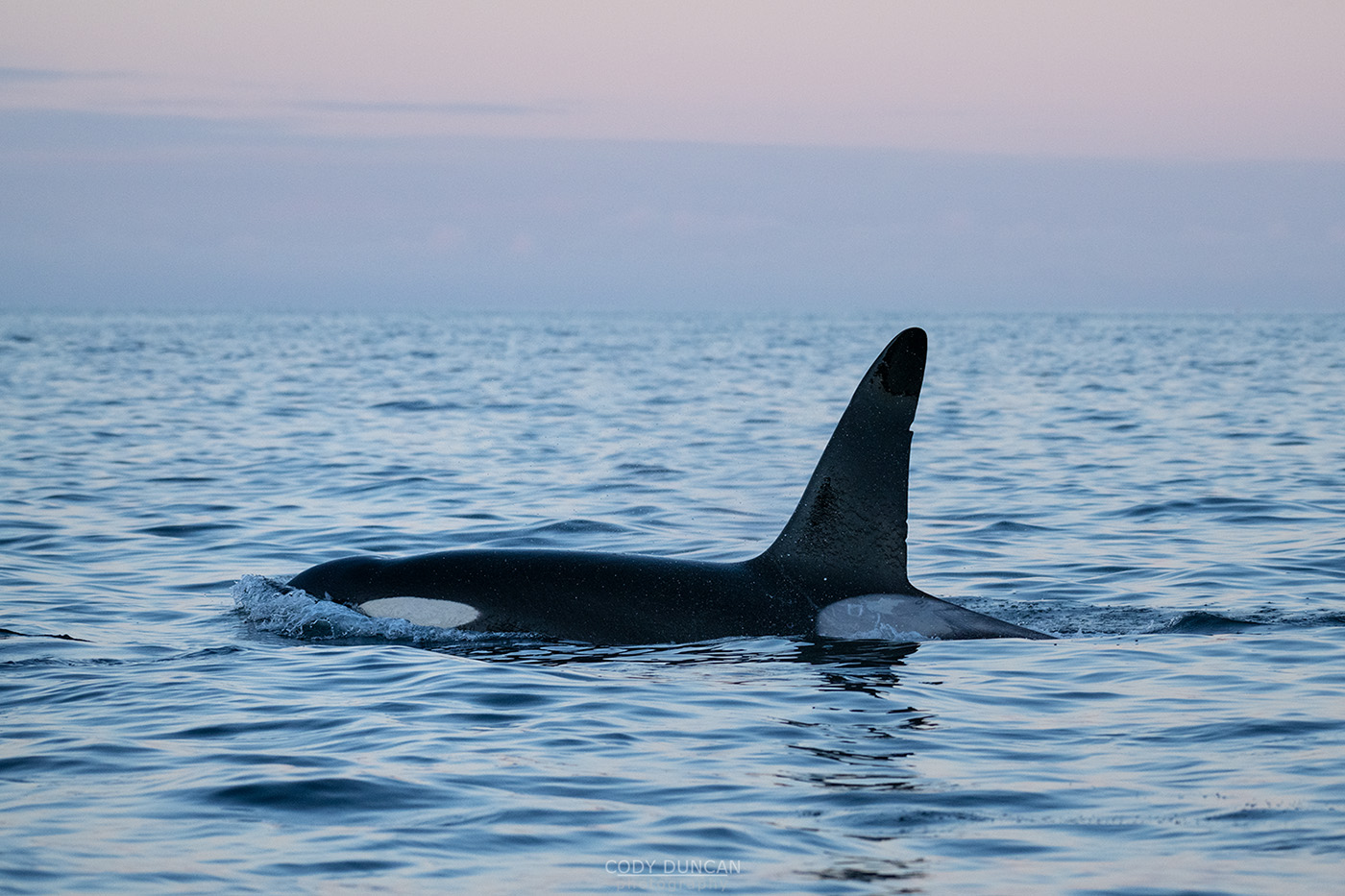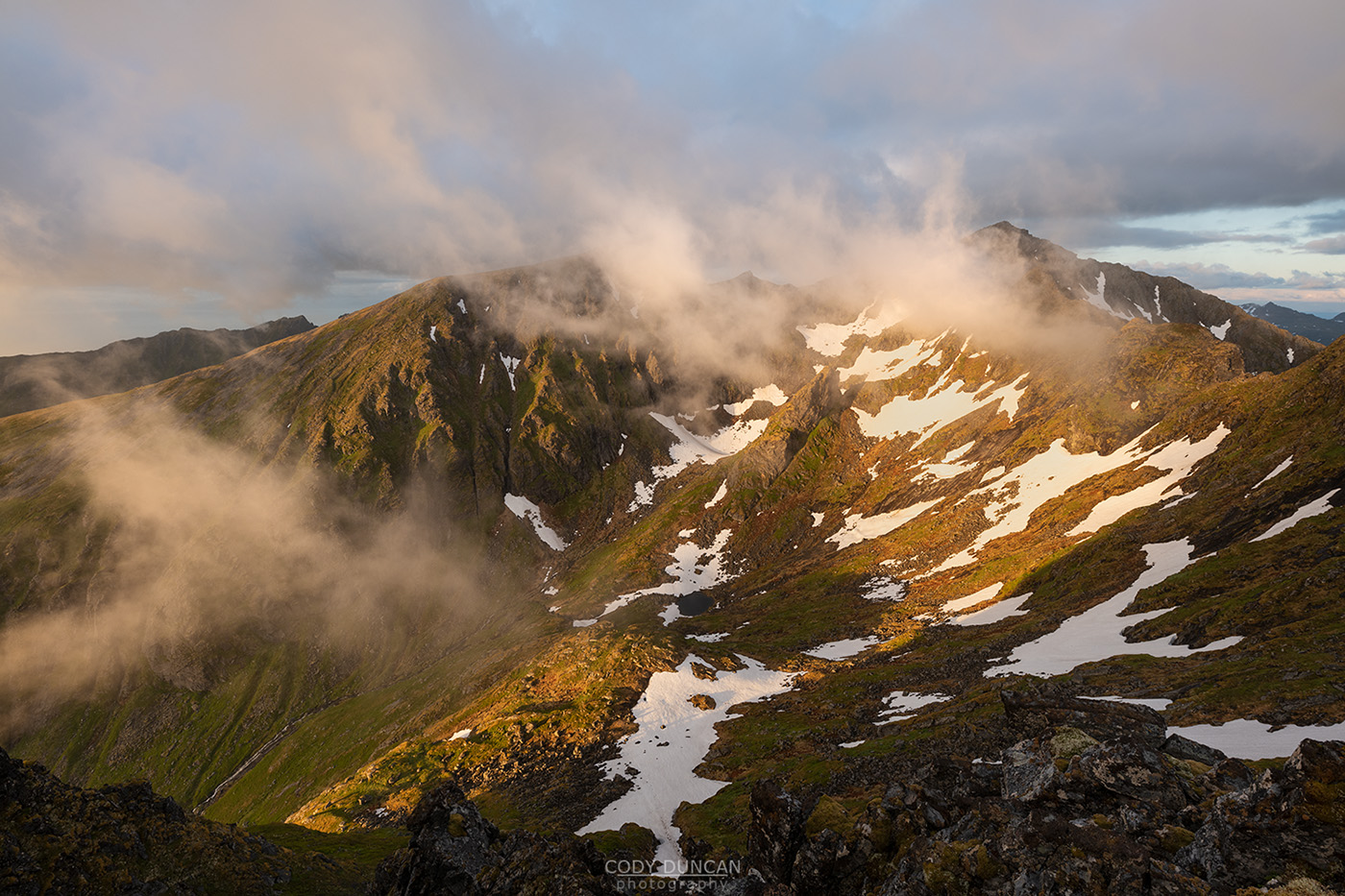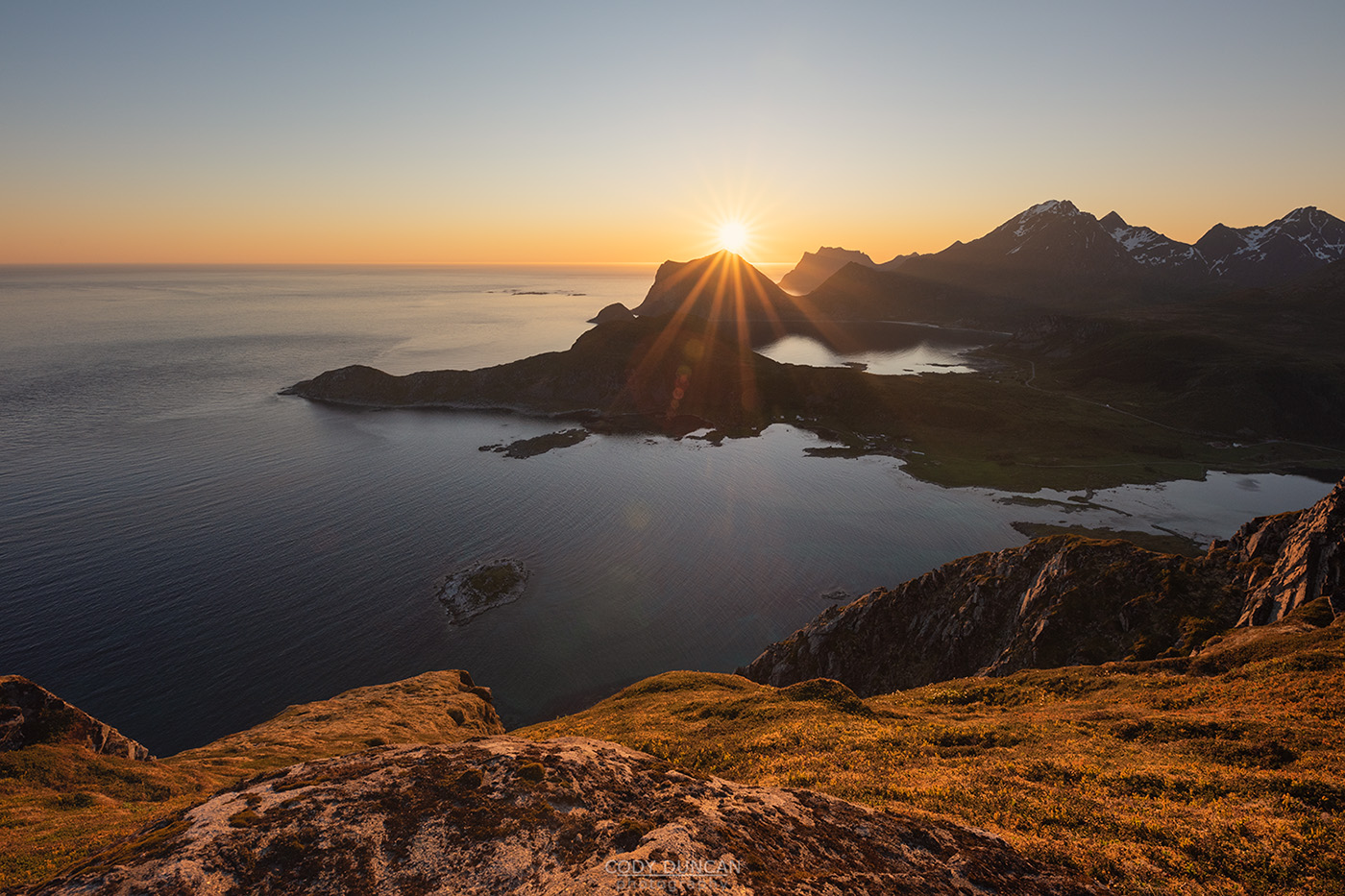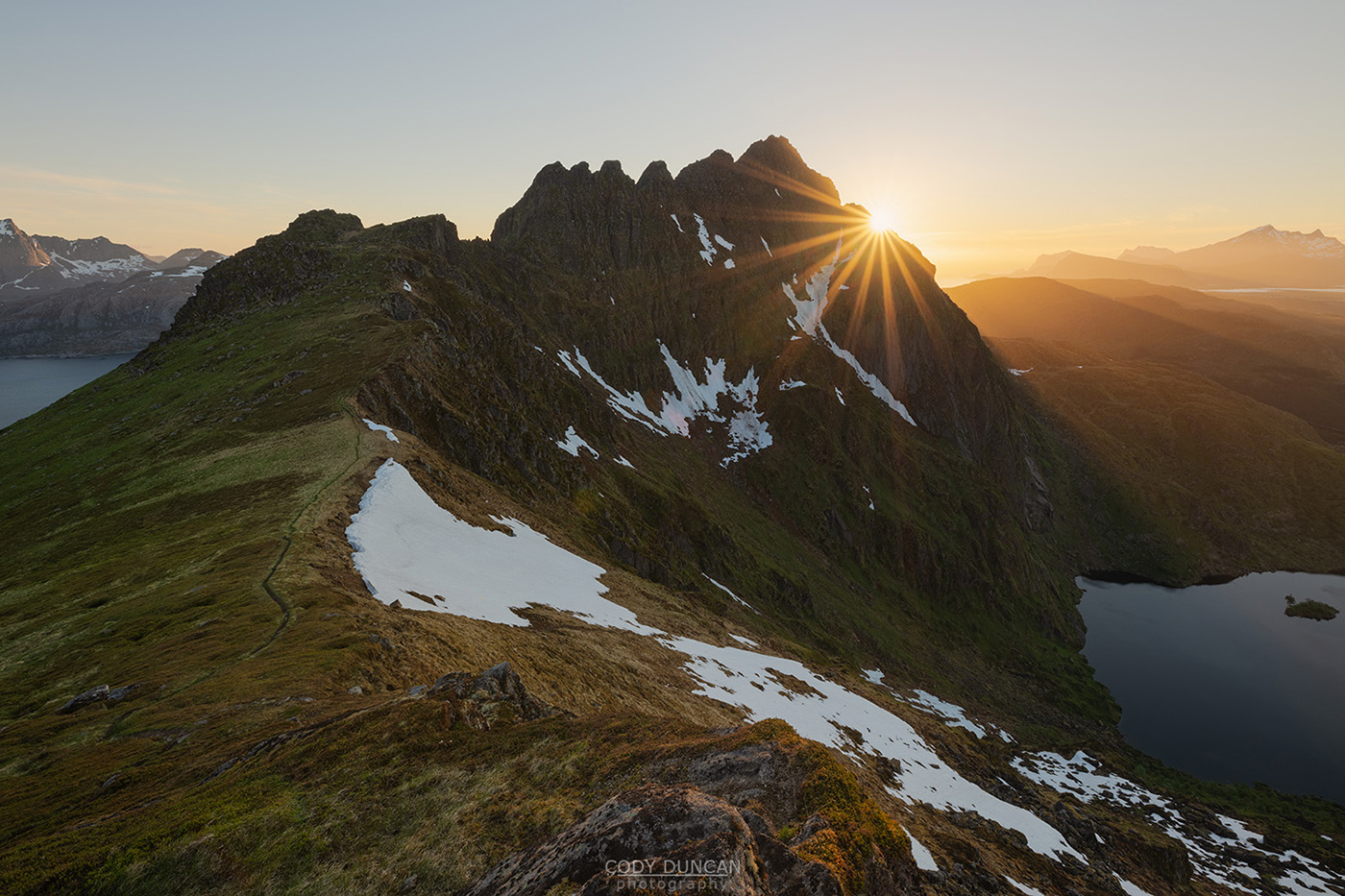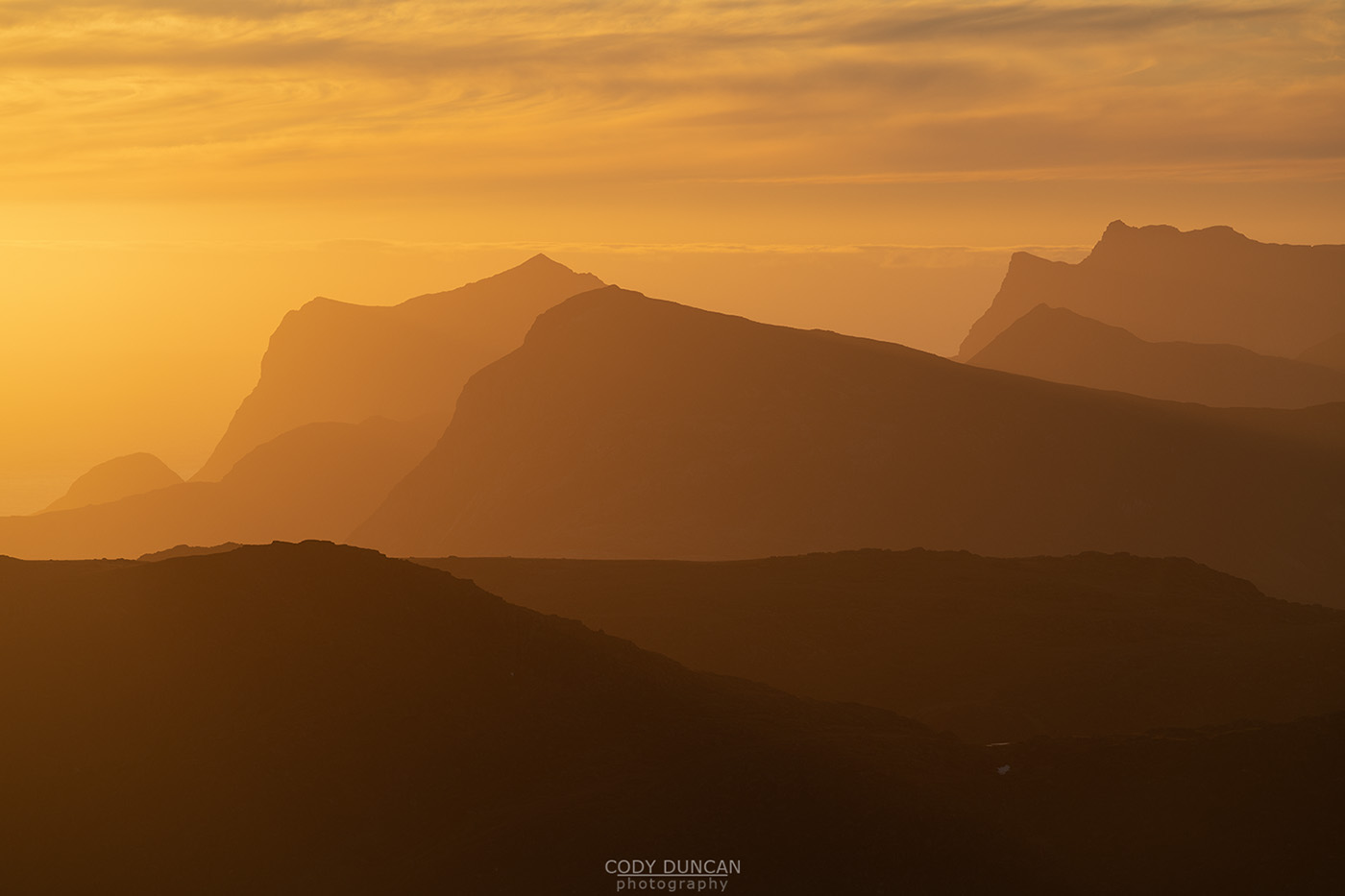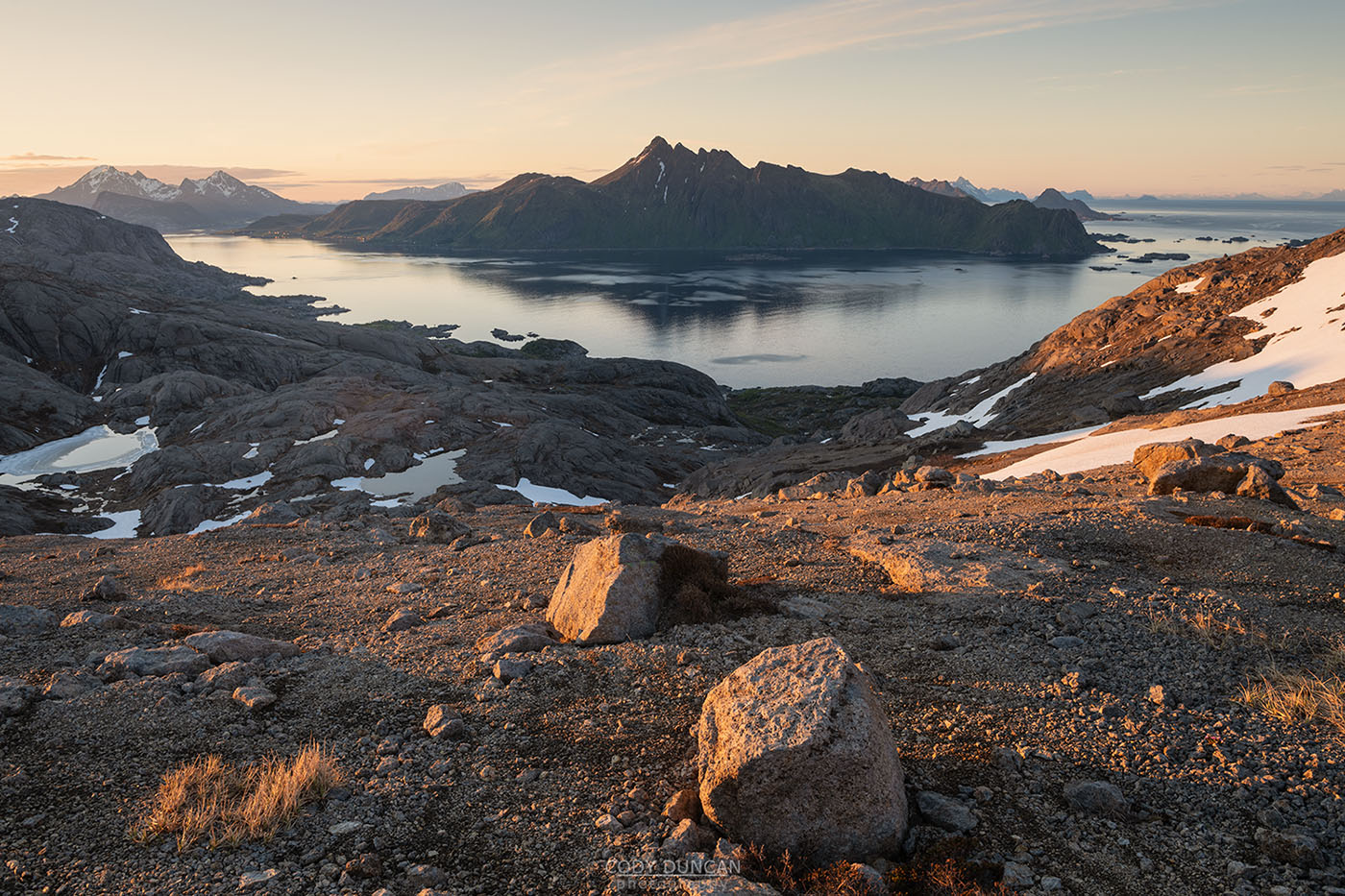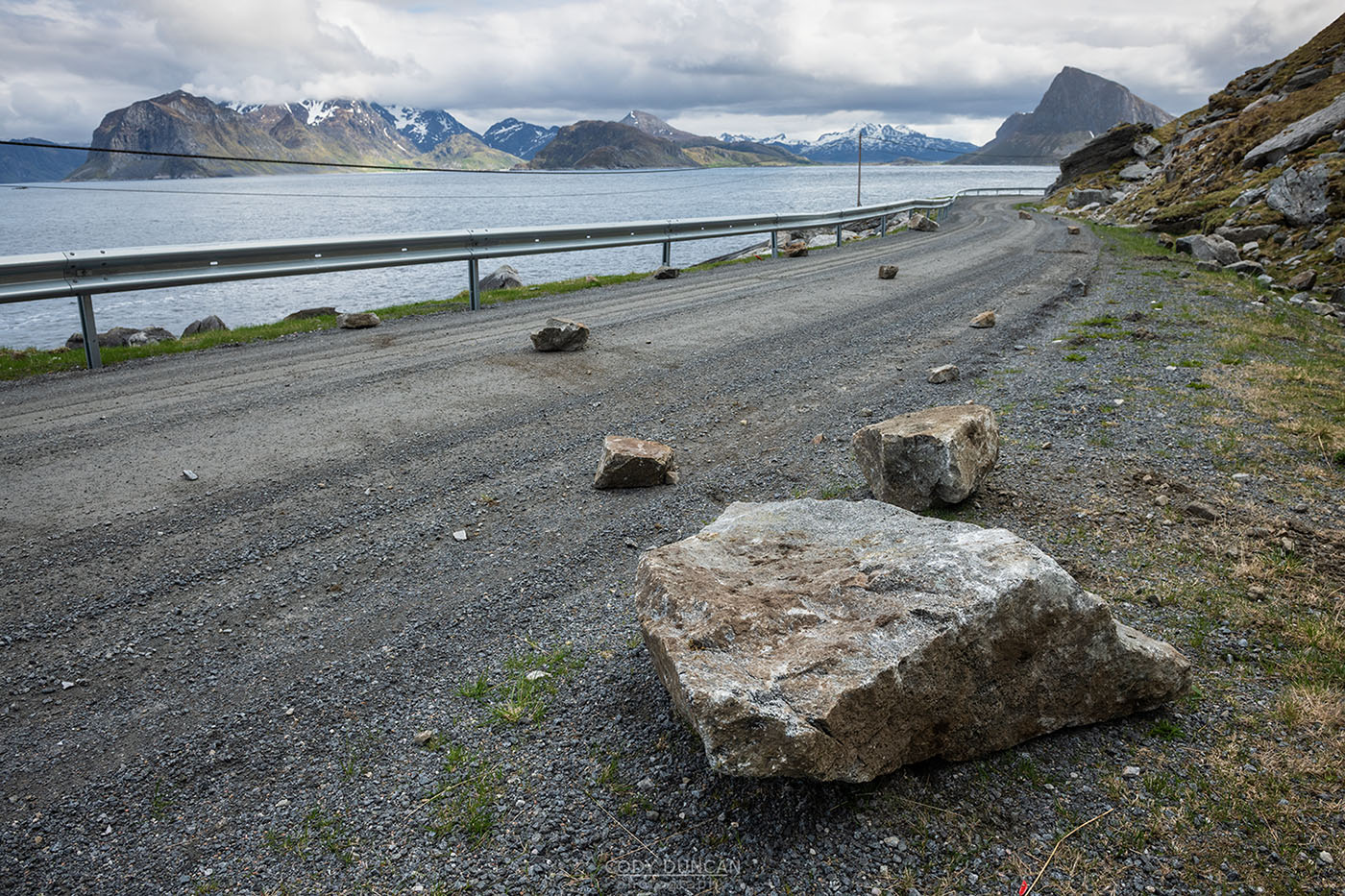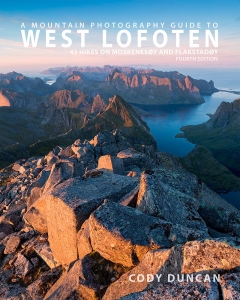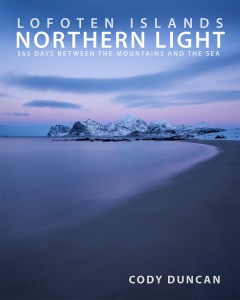Photo: Rays of the midnight sun shining from behind Skottind from Ballstadheia, Vestvågøy, Lofoten Islands, Norway. June 15, 2020. 23:54
Photo: Hazy mountain layers in light of midnight sun from Ballstadheia, Vestvågøy, Lofoten Islands, Norway. June 16, 00:19
The power of zoom – one location and two completely different photos: 14mm and 200mm. I had been a bit indecisive as to where to go on this night. We’ve now had over a week of nearly cloudless skies over Lofoten and there is only so much you can do with the sun in a clear sky.
With the summer solstice tomorrow, when the sun it’s at its lowest at 01:00, it still remains well above the horizon during this period. So going to the coastal peaks on the yttersia can be a little boring – with just the sun sitting over the ocean – though maybe I try and shoot a time lapse of this in the next few days. Otherwise, finding something to put in front of the sun is the best in such good weather.
initially I drove to Justadtind, but I didn’t quite feel up to that long hike. Next I drove to Skottind, but again, something just felt off. Almost thinking of going home and being lazy, I finally drove to Ballstad and decided to go up the little hill of Ballstadheia so I would at least do something!
I took my time, wandering around the maze of trails to several different overlooks before making my way to the high point of the hill. Just as I arrived, I could see the sun emerging from around Skottind as well. This sent me into a slight panic for a moment thinking I might have missed my timing by only 1-2 minutes. But luckily its possible to walk down the mountain ridge, back into the shadow, find a new composition, and wait for the sun to emerge around the mountain again. Actually pretty perfect and much better than I had planned! I repeated this for several shots.
But also in the distance I could see the sea haze glowing in the sunlight. Switching to 200mm, I shot several compositions of this as well before the sun moved too far into the scene causing too much lens flare. again, I just had lucky timing and luck for the conditions – I wasn’t expecting such cool haze.
Looking at the two images next to each other, you can seen the area in the first photo where I then zoomed in and shot for the second image. But if you looked at each image individually, it would be easy to think they were shot at different locations at different times and not more of less from the same location within less than 30 minutes.
One of the most frequent questions during my photo workshops is, ‘What lens should I use?’ And my common response is, ‘What do you want to photograph?’ (with further detailed explanations of course…) This is a perfect illustration of that: You’re standing on a mountain watching the sun emerge from around another mountain. What lens should you use? There isn’t just one answer…
Camera Info Photo 1:
Nikon D850
Sigma 14mm f/1.8
14mm
ISO 100
f 13
1/10 second
WB Daylight
Camera Info Photo 2:
Nikon D850
Nikon 70-200 f/4
200mm
ISO 100
f 7.1
1/500 second
WB Daylight
